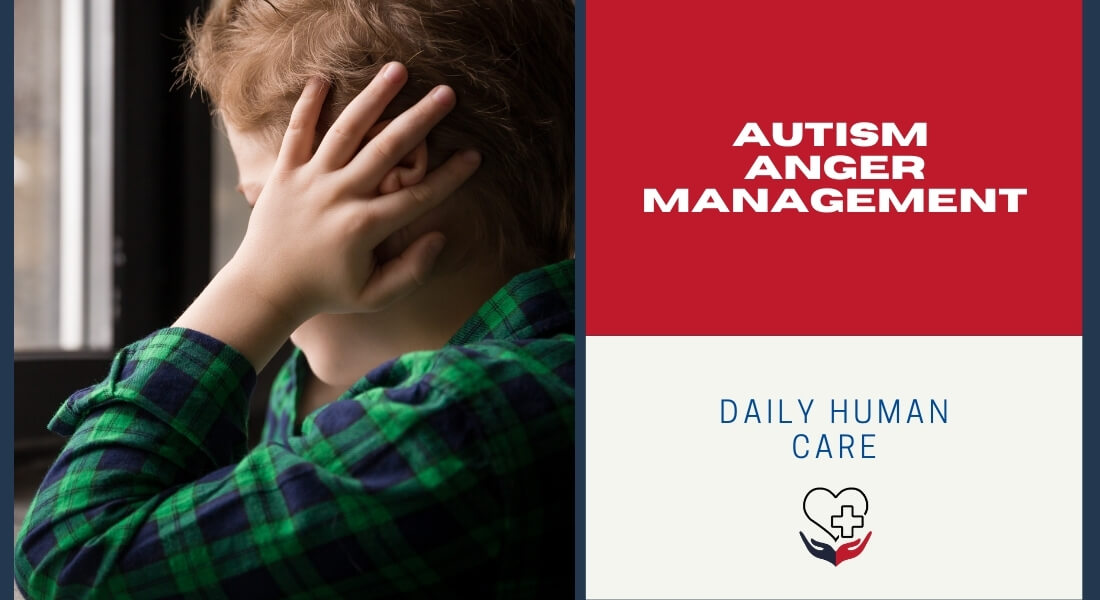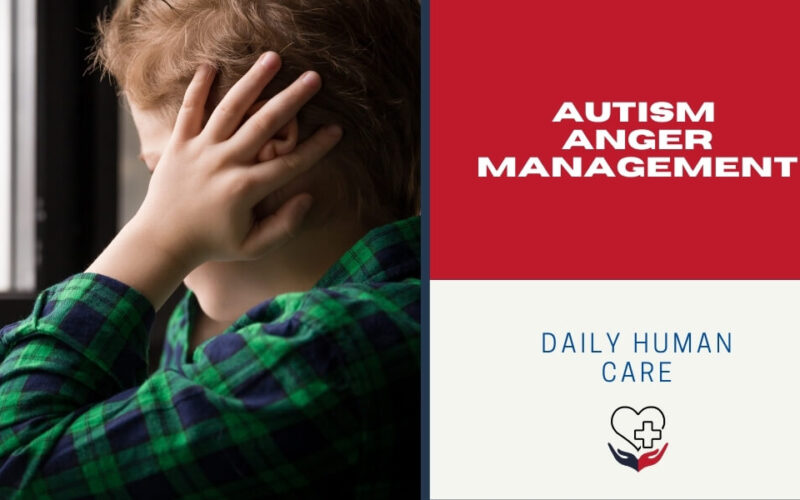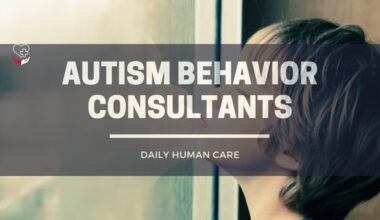Daily Human care always cares about your health, either physical or mental.
We are going to discuss autism anger management. But before that, let us discuss Autism Spectrum Disorder shortly. Then we’ll provide you with ways to manage anger in autism
Table of Contents
What Is Autism Spectrum Disorder?
Autism is a permanent cognitive disorder that affects how people view the environment and how they connect and communicate. Many tend not to see autism as a ‘healing’ disorder or condition but instead, believe that autism is part of their identity. Autism is referred to as a disorder of the continuum, meaning that people may differ in the way they are affected. A high proportion of people with autism experience mental health issues such as anxiety and depression, and interventions like CBT are successful, mostly when suitable adjustments are made.
Signs and Symptoms of Autism Spectrum Disorder
Autism is a neurodevelopmental condition that first occurs and follows a steady path during infancy or childhood. A triad of impairments describe it:
- Impairment of social contact, including social-emotional deficits (e.g., irregular social approach, absence of usual back-and-forth communication, diminished exchange of interests or feelings, absence of initiation or reaction to social interactions).
- Impairment of speech, including nonverbal deficits in social engagement practices.
- Limited interests and repeated habits, including stereotyped or repetitive motor gestures, restrictive routine compliance, high-intensity oriented fixed interests.
Individuals with autism may have difficulty establishing, sustaining, and recognizing relationships with other individuals. This could range from behavior change problems to match different social environments and trouble making friends to a total lack of interest in other people.
Autistic children are more likely to experience mental health concerns than the general population. In the autistic population, symptoms such as anxiety disorders, obsessive-compulsive disorders, and depression are all encountered at a greater level.
Does autism get worse with age?
One interesting finding was that the severity of children’s symptoms would vary with age. Children can really grow and improve. “We find that almost 30% of young children had less significant signs of autism at age six than at age 3
Can autism cause anger issues?
For people with autism, frustration is not uncommon. Suddenly, apparently, from nowhere, the rage will come and then disappear as soon. Stress, sensory overload, ignorance, and routine change are all causes.
Autism Anger Management

Some underlying autism spectrum disorder (ASD) symptoms can lead to behavioral issues in children, such as anger and angry outbursts. Simply not being able to express one’s thoughts and feelings to others is one such trait. This can lead to anger or not being listened to and feelings of being misunderstood. Another may be the propensity to require “sameness” for a child with autism, with no routine adjustments: any changes in the daily schedule or familiar atmosphere can be very disturbing and cause anxiety.
It can be frustrating and exhausting to calm down a child with autism, but it is important to treat these outbursts of frustration constructively. Here are some ideas of autism anger management on how you can de-escalate the rage of your child and help them learn how to handle anger, thereby taking back control of the situation.
Listen to your child to recognize from where the rage comes
You must first try to decide where it comes from if you are to deal with the rage of your child. This can be extremely difficult if you have difficulty expressing your thoughts and desires. Ask your baby what’s wrong and listen to what they say. Enable them to control their frustration by talking. Are they angry because the favorite toy or object cannot be found? Or is it a little more profound? Speak to your child and try to get it right. These tangles occur every day at the same time and can provide an insight into the cause. It should be noted.
A communication device or technique is one of the most critical and effective methods for using in situations where your boy is upset or angry but has difficulty communicating emotions. To help your child express himself, you should build some kind of visual body or visual representation of feelings, causes, and consequences. Schools use autism anger management techniques to help students communicate well, and your child’s school will use visual aids and regulatory zones to help autistic children communicate and control frustration effectively.
When you know this trigger, you will steer clear of this trigger in the future. Give your child time to say what they feel, and let them know that you care about how they feel. Keep calm and withstand the temptation to shout. Model your child’s positive behavior to understand. Perhaps the problem is simple to remedy. Then again, you might have no power over the root of anger. In this situation, it will help you diffuse your frustration if you alter the immediate atmosphere or attempt to turn your attention on something else.
In a safe place, let your child express anger
It is essential, when the rage is inevitable, to let your child unlock its feelings safely in a position where it will not harm itself or anyone else. You may try to redirect the cold by giving them a soothing object like a pillow to scream into or use as a box. They’ll get tired after a while and start to relax. Another way to convey the child is to allow it to write down its thoughts in a paper or speak about what disturbs it.
You can also try to convey your feelings through art, for example, by writing a poem or drawing an illustration. You’ll help your child to learn how to handle frustration more structurally by teaching them how to express themselves.
Set a comfortable place where you can relax for your child in your home
It could be a bedroom for the child or a game room. Ensure that the designated protected area is free of objects that could break or injure someone if they are cast or knocked down. The mood of this safe place can be established and modified to something your child can find calming.
Try to create a less airy atmosphere, if your child likes it, by making the area sunnier or quieter. It is important to note that not all children who are autistic have the same causes or preferences, so try to see what’s best for relaxing your boy.
One kid might not like bright sunshine and prefer the curtains to be closed, while another may find it admirable.
Meet your child a compromise if you can’t get what you want
If your child is angry that he/she cannot or wants something, try to find a compromise, if necessary. Perhaps before eating their meal, they want dessert. You are going to make a special dessert for them if they eat their meals.
Maybe they would like to make a sundae with ice cream or bake cookies in fun form. Don’t just stop their bad behavior with the demands of your child. A period of time off for bad behavior can be effective for children under eight years of age.
Pay tribute to a child for his good conduct and the law. There should be a little constructive strengthening to show them how to cope with anger. It can be so simple that a child can earn foil stars on a chart after collecting a certain number of them.
Speak truthfully about the implications when your child gets physical.
It is time to speak to your kid about the potential effects of your actions when anger leads to physical abuse. This type of action should not be overlooked. In the midst of anger, even a small child can cause serious harm to others, but one day this child will become much larger, and a serious safety problem could be developed.
Let your child know that such behaviors, and those who do those things, may have to go to a youth detention center or prison. Be truthful about what you want from your child and seek professional advice if you need support.
If you cannot cope with the situation and are worried that someone could get injured, dial 911 in an emergency.
Often physical exercise helps alleviate anxiety
One way to avoid surplus energy from escalating into a situation of rage is by dismantling it with physical activity. Look for an activity that your child likes to do, such as dance, practice, walk, ride, or even playful wrestling.
In effect, this physical activity allows the brain to create endorphins that can contribute to euphoria and well-being. Perhaps they would like to take a nature stroll or a ride to the playground of the neighborhood.
Give them the toys to alleviate tension and anxiety.
Giving a child something to redirect and concentrate on will help prevent its anxiety from escalating into a furious outbreak. These tiny hand toys or game toys can be fun and take care of you.
Keep small toys holding and rubbing, squishing, stretching, or spun will offer a sense of peace instantly. Various famous toys are available on the market. Some of them give touch stimulation or come in fun and sparkling colors.
It involves gripping balls, shiny colorful putties, moldable bubble sprays, spreading whimsical items like a magic mouse on top of the cheese, bristles, long links, and tabletop spinners.
It’s never easy to help your child cope in difficult circumstances. Often the only thing you can do is ask experts to guide and advise you. For any questions or to enroll them on one of our excellent systems, you can enter Lexington Services today. Our staff will assist children in constructively handling frustration and direct them through behaviors and exercises that enhance their future. To find out more, please contact Lexington Services today.
How to manage anger in an autistic child?
For autism anger management,
- Be empathetic. Empathy means listening without prejudice and remembering their struggle.
- Feel protected and loved by them.
- Remove fines.
- Concentrate on your kid, do not look at people who watch.
- Split your toolkit out of the sensory.
- Provide them strategies for coping until they are relaxed.
Also, read an article about Autism and language development.



